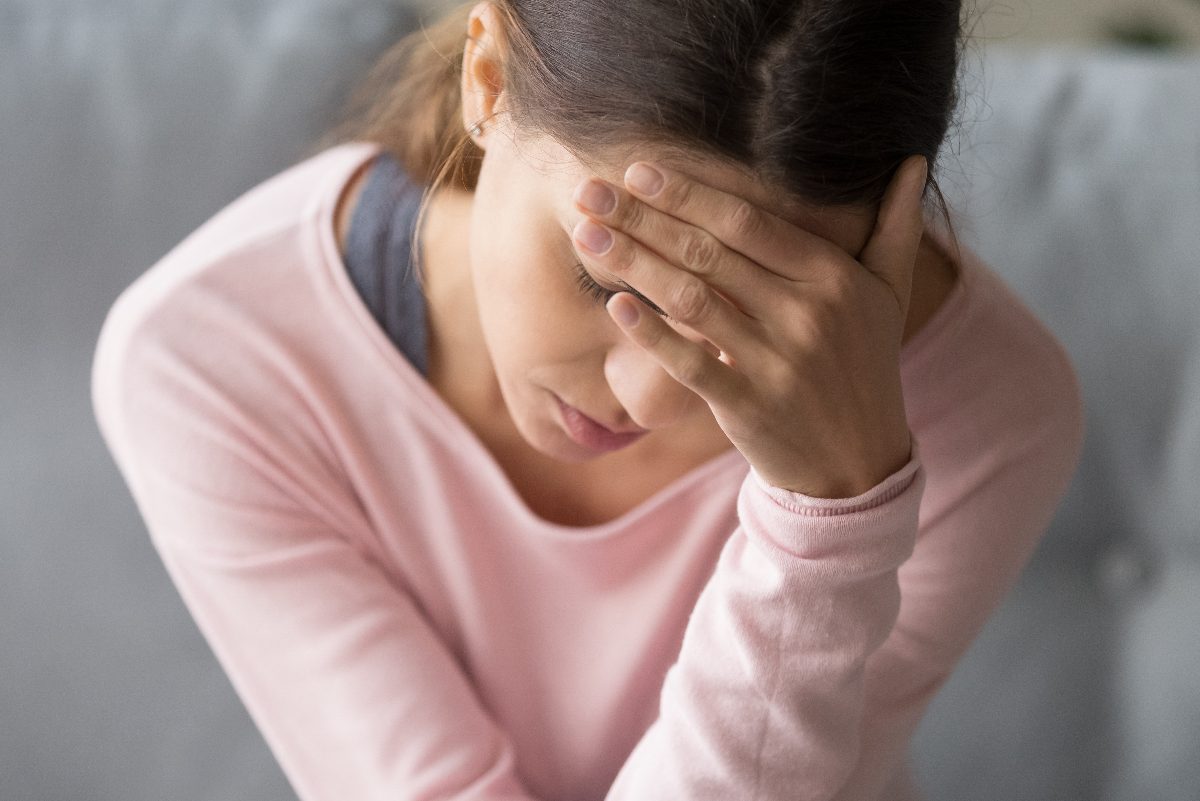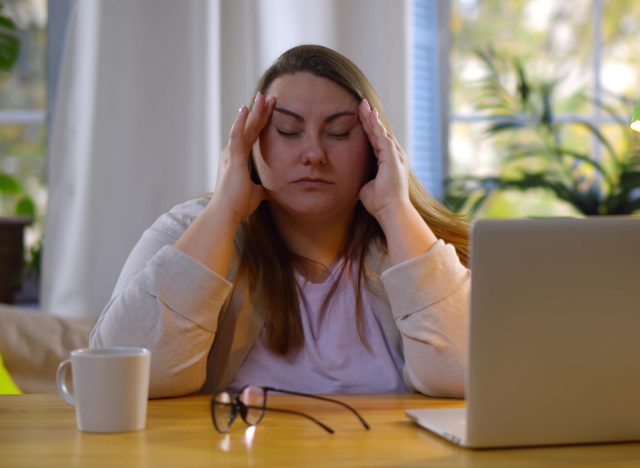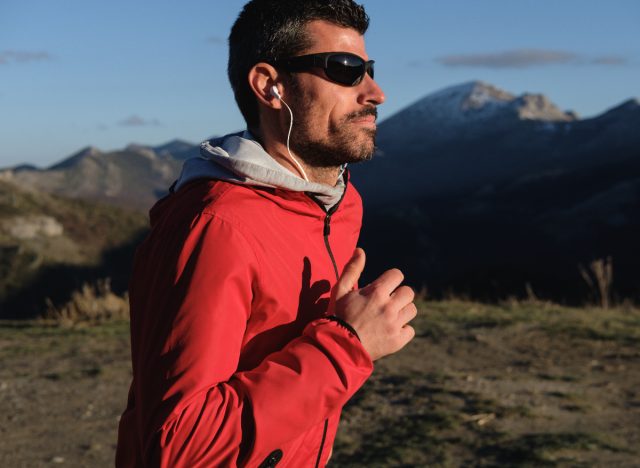More Than Half Of The World Suffers From Headaches, New Research Says

Another day, another headache, migraine, or sinus pressure. If you suffer from random headaches, pressure, or relentless migraine symptoms, including nausea, light sensitivity, vomiting, or more on a regular basis, you are certainly not alone. In fact, according to the World Health Organization (WHO), headache disorders take the title of being the most widespread nervous system disorder. And now, new research published in The Journal of Headache and Pain discusses just how much of the world deals with dreaded headaches and migraines. Read on to learn more, and next up, be sure to check out The 6 Best Exercises for Strong and Toned Arms in 2022, Trainer Says.
52% of the world's population is affected by headaches, new research suggests

The new research was performed by the Norwegian University of Science and Technology and St. Olavs Hospital in Trondheim, Norway. Scientists evaluated studies that occurred throughout a 59-year period, from 1961 to 2020. Their mission was to compare, understand, and update the most predominant conditions individuals suffer globally, studying the headache chronicle of participants during the past year, along with some of their entire life history. Most of the studied individuals were in the 20 to 65 years old age bracket, with some of them being over 65 and even children the age of 5.
The approximate type of headache conditions in those studied was categorized as follows: 52% were headaches, 14% were migraines, 26% were tension-type headaches (TTH), and 4.6% were headaches for 15 days or longer each month. During each day that was examined, 15.8% of individuals across the globe were experiencing a headache. The studied group confirmed that headache disorders are endured commonly worldwide. The length of migraines varies in individuals and geographical locations.
According to lead study author Lars Jacob Stovner, "We found that the prevalence of headache disorders remains high worldwide and the burden of different types may impact many. We should endeavour to reduce this burden through prevention and better treatment. To measure the effect of such efforts, we must be able to monitor the prevalence and burden in societies. Our study helps us understand how to improve our methods."
Related: Drink This Much Water Each Day To Prevent Heart Failure, New Study Says
There are always newfound methods for caring for migraines

There are always newfound methods for caring for migraines. According to the American Migraine Foundation (AMF), two common medications used to treat migraine relief are Triptans, which come in several forms including oral tablets, injections, and nasal sprays. This medication needs to be taken when the very first sign of the headache phase occurs before a full-blown migraine. There are also gepants, which are used for moderate-to-severe migraines at their start. Gepants are usually prescribed to patients who are unable to take triptans. These meds are taken orally to help lessen and target the protein "calcitonin gene-related peptide" (CGRP), which can lead to brain inflammation.
Related: Sneaky Habits That Ruin Your Gut Health As You Age
Triggers that can lead to headaches or migraines

There are so many triggers that can initiate a headache or migraine, including sleep deprivation, stress, low blood sugar, dehydration, hormonal changes, caffeine, too much medication, and even strong scents, loud noises, and bright lights, according to Florida Medical Clinic.
Various methods help individuals in different ways. Some people benefit from an ice pack, while others prefer a heating pad. Moving to a different location, away from noises, scents, and lights can be helpful, too. You should always take your medication or ibuprofen at the first sign of a bad headache or migraine to be most effective. Be sure to get yourself hydrated with plenty of water.
In general, try to avoid stress whenever possible, and be sure to exercise and get proper sleep. Don't ever skip eating your meals, and know your body. If you pay close attention, you may find certain things that trigger your headaches or migraines and can quickly learn to stay away from them. Don't hesitate to speak to your medical professional for an exam, diagnosis or advice, and just the right treatment plan for you.
For more…

For more mind and body news, be sure to check out 5 Bad Fitness Habits You Need To Ditch After 50, Trainer Says and The Most Productive Floor Exercises To Get Rid Of A Flabby Stomach, Trainer Says.








